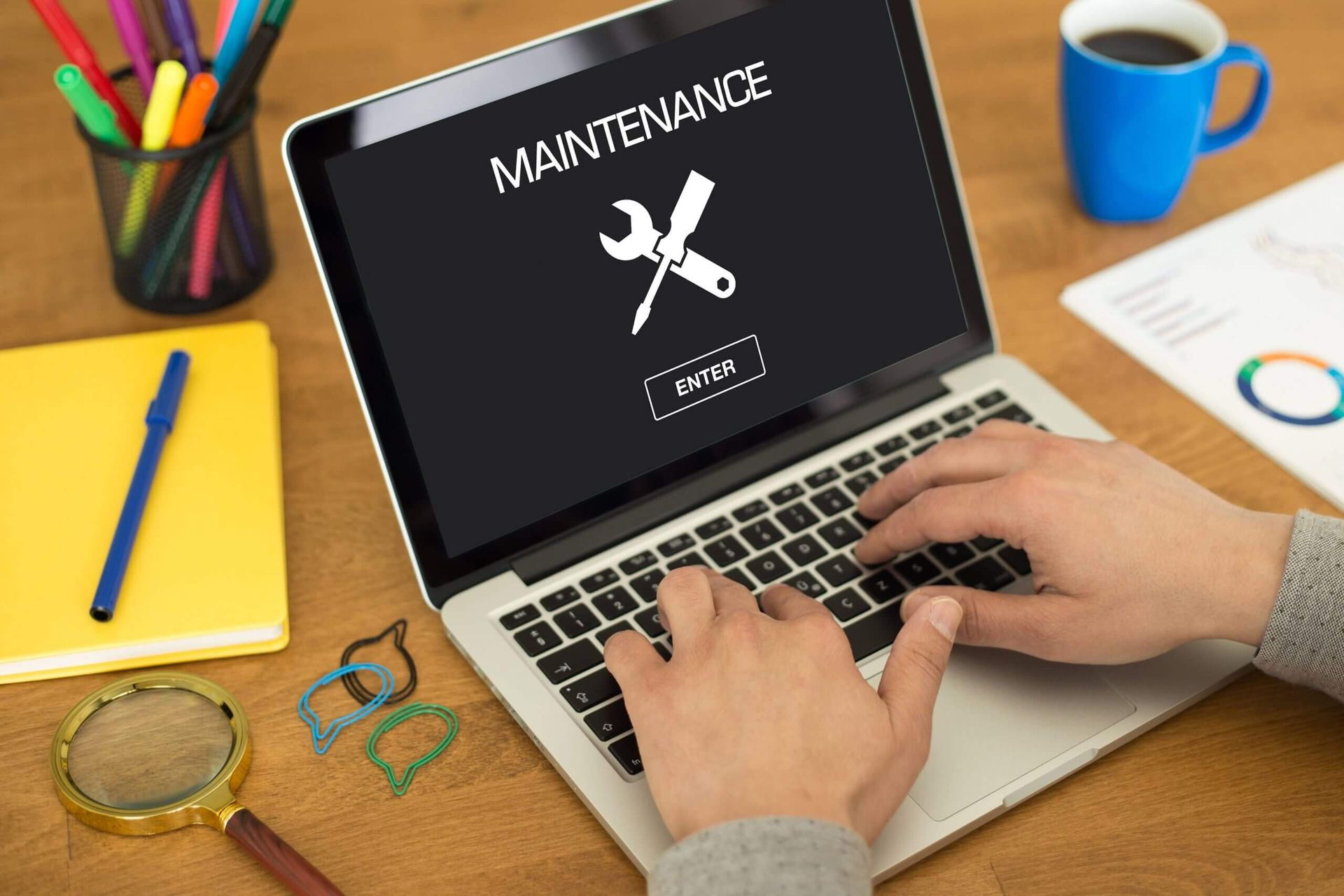Small Fixes, Big Impacts: The Art of Website Maintenance
Your website is often the first impression people have of your business. It’s your digital storefront, your brand’s voice, and your most valuable tool for connecting with customers. But maintaining a website isn’t always at the top of the priority list for many businesses. The truth is, even the smallest updates and fixes can have an outsized impact on your website’s performance, user experience, and ultimately, your bottom line.
Website maintenance is not just about ensuring your site doesn’t crash or display outdated content. It’s about creating a seamless, engaging, and secure experience that keeps visitors coming back. In this blog, we’ll explore why website maintenance matters, the key areas to focus on, and how small fixes can lead to big results.

Why Website Maintenance Matters
1. First Impressions Count
Your website is your digital handshake. Within seconds of landing on your site, visitors form an impression of your brand. A slow-loading page, broken links, or outdated design can create doubt and drive potential customers away.
Did you know? Studies show that 88% of online consumers are less likely to return to a site after a bad experience. Keeping your website in top shape ensures you’re always making a strong first impression.
2. Search Engine Optimization (SEO)
Search engines favor websites that are fast, secure, and consistently updated. Regular maintenance helps ensure your site meets SEO standards, improving your rankings and driving organic traffic.
- Fix broken links: Search engines penalize sites with too many errors.
- Optimize load times: Faster websites rank higher and reduce bounce rates.
- Update content: Fresh, relevant content signals to search engines that your site is active.
3. Security and Trust
Cybersecurity threats are on the rise, and your website is no exception. Outdated software, unpatched vulnerabilities, or expired SSL certificates can leave your site open to attacks, compromising both your data and your customers’ trust.
Regular maintenance includes:
- Updating plugins, themes, and software.
- Installing security patches.
- Renewing SSL certificates.
4. User Experience (UX)
A great website isn’t just about how it looks—it’s about how it works. Smooth navigation, responsive design, and easy-to-use interfaces keep visitors engaged and drive conversions. Regular tweaks ensure your site remains user-friendly and relevant.
Key Areas of Website Maintenance
Maintaining your website can seem overwhelming, but breaking it down into manageable tasks makes it more approachable. Here are the key areas to focus on:
1. Performance Optimization
Speed is everything. A slow website can frustrate users and lead to higher bounce rates. Focus on:
- Compressing images: Large image files slow down load times. Use tools to compress images without losing quality.
- Caching: Enable caching to improve page load speed for returning visitors.
- Minimizing code: Remove unnecessary HTML, CSS, and JavaScript to streamline your site.
2. Content Updates
Your content should always reflect the current state of your business. Outdated information can confuse visitors and make your brand appear inattentive.
- Update product or service details: Ensure your offerings are accurately described.
- Refresh blog posts: Add new insights or update stats in older posts to keep them relevant.
- Check for errors: Regularly proofread content for typos or inaccuracies.
3. Design Tweaks
Even small adjustments to your design can significantly improve user engagement.
- Test CTAs: Experiment with button colors, placement, or text to boost clicks.
- Mobile optimization: Ensure your site looks and functions well on all devices.
- Navigation improvements: Simplify menus and make important information easy to find.
4. Technical Updates
Behind-the-scenes updates keep your site running smoothly and securely.
- Software updates: Regularly update your CMS, plugins, and themes.
- Backups: Schedule automatic backups to prevent data loss in case of an issue.
- Monitor uptime: Use tools to track your site’s availability and resolve downtime quickly.
Small Fixes That Make Big Impacts
You don’t need a complete overhaul to see significant results. Sometimes, the smallest changes can have the biggest impacts.
1. Fixing Broken Links
Broken links not only frustrate users but also hurt your SEO. Use tools like Google Search Console or Screaming Frog to identify and fix them.
Impact:
- Improves user experience by reducing frustration.
- Enhances SEO performance by eliminating errors.
2. Improving Page Load Speed
Slow-loading pages are a major turnoff for users. Compress images, enable caching, and upgrade hosting if necessary.
Impact:
- Keeps your site visually appealing and engaging.
- Reflects your brand’s evolution and current identity.
4. Adding Fresh Content
Regularly publishing new content, like blogs or case studies, signals to both users and search engines that your site is active.
Impact:
- Attracts new visitors and retains existing ones.
- Positions your brand as a thought leader in your industry.
How Regular Maintenance Drives Long-Term Success
1. Builds Customer Trust
A well-maintained website shows that your business is professional, reliable, and attentive to details. This builds trust with your audience, making them more likely to engage with your brand.
2. Reduces Costs Over Time
Preventative maintenance helps you avoid costly repairs or crises down the line. Addressing small issues now prevents them from becoming bigger problems later.
3. Keeps You Competitive
In a crowded digital landscape, staying ahead requires constant improvement. Regular updates ensure your site remains relevant and competitive.
4. Boosts Conversions
From faster load times to better user experiences, regular maintenance directly impacts your conversion rates. Happy users are more likely to take action.
Case Study: The Power of Small Fixes
Scenario: A mid-sized e-commerce business noticed declining sales and increasing bounce rates. Their website hadn’t been updated in over a year.
Challenges Identified:
- Slow page load times.
- Outdated product descriptions and images.
- Broken links in key navigation areas.
Small Fixes Implemented:
- Compressed all images to improve load times.
- Updated product pages with fresh descriptions and high-quality visuals.
- Fixed broken links and streamlined the navigation menu.
Results:
- Page load time decreased by 40%, reducing bounce rates by 25%.
- Updated content led to a 15% increase in sales.
- Fixed links improved user satisfaction, reflected in higher session durations.
This case illustrates how small, strategic changes can lead to significant business outcomes.
Final Thoughts: Prioritize Maintenance for Big Results
Your website is one of your most valuable assets, and maintaining it should never be an afterthought. By focusing on small, consistent updates, you can create a website that’s fast, secure, and engaging—one that drives traffic, builds trust, and delivers results.
Remember, the art of website maintenance isn’t just about fixing what’s broken. It’s about continuously optimizing, evolving, and ensuring your website reflects the best version of your brand.
So, what’s the first small fix you’ll make today?







